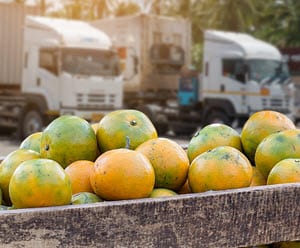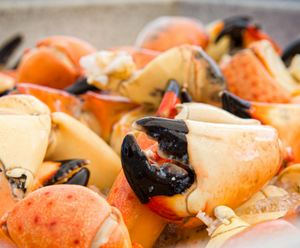
Delivering fresh approaches for supply chain growth with reefer logistics

At a time when global supply chains face multiple disruptions due to geopolitical conflicts, a recessionary environment, and other economic uncertainties, advances in reefer container design offer the logistics industry new opportunities for flexibility and growth.
But what exactly is a reefer container, and what is it used for? Simply put, it’s a temperature-controlled shipping container used to ferry perishable goods over long distances.
Reefers can play a critical role in ensuring the safe and reliable transport of perishable goods. They allow the shelf life of temperature-sensitive produce to be extended during transit, so deploying them can help perishables carriers preserve the quality of their goods while reducing waste and losses. This enables fresh goods to be shared with anyone in the world, at any time of the year, allowing carriers to meet demand all year round. Small wonder, perhaps, that the global reefer container market is rapidly expanding. Analysts estimate it will grow at an annual rate of 3 percent until 2026, eventually reaching a value of USD $24.6 billion by 2030.
So, what do logistics companies – and especially perishable goods carriers – need to know about reefer containers to take advantage of this growing trend?
Who is most likely to use reefer containers?
Carriers in the business of transporting perishable foodstuffs such as dairy products, fruit, meat, and seafood are among the industry players most likely to use reefers. With strong consumer demand for healthier, more sustainable diets boosting the global trade in perishables, these carriers are under pressure to streamline and improve their methods for moving fresh produce.
It’s a similar story with the global pharmaceutical industry. Reefer containers were in high demand for vaccine deliveries during the pandemic. Since then, a shift toward more complex generic drugs based on biopharmaceuticals meant a growing need for more sophisticated approaches to transporting temperature-sensitive products and ensuring that their integrity during transit can be maintained.
What are the benefits of using reefer containers?
Modern reefers are carefully designed to protect goods from perishing. Most reefer containers feature a refrigeration unit that enables a supply of chilled air to circulate around the cargo. Often, the air is blown upwards from the floor of the container via specially designed T-shaped decking designed to cool the cargo from the bottom up.
Temperature settings can be varied based on the perishables being transported. For example, some types of goods – such as snow peas and melons – are especially sensitive to transit time and need to be maintained at a specific temperature to slow the ripening process. However, reefer units typically can’t lower the temperature of goods. Instead, they maintain cargo at a steady internal temperature or raise that temperature when required. That means cargo may need to be pre-cooled to the desired temperature before being loaded into the container.
As most reefers come fitted with insulation between their external and internal walls, they can also offer better temperature stability compared to standard containers or trucks. Powered by an electric unit, this insulation can also help to maintain internal temperatures if the container is being transported between destinations and its cooling motor is not active.
Commonly used for transport are diesel reefers, which are fuelled by a diesel-powered generator set (genset) that is mounted to its side or attached underneath, to be removed after delivery or storage.
Reefers can also be partitioned to create different departments at different temperatures. That means both frozen and chilled goods are capable of being stored in the same container, allowing for a much more efficient use of cargo space.
Moreover, advanced reefer containers often come equipped with sophisticated monitoring and tracking capabilities that provide real-time data on temperature, humidity, and other environmental conditions such as atmosphere. Carriers can remotely monitor and adjust settings as needed, ensuring that goods remain within the specific temperature range required to transport them safely.
Sensors can also be used to determine if products are exposed to light. This is an important issue when transporting certain pharmaceuticals, where such exposure can trigger harmful alterations in drug composition and potentially breach regulatory compliance.
How is a reefer container transported?
A further benefit of reefer containers is their adaptability across different transportation modes. For example, reefers can be loaded onto refrigerated trucks or trailers for transportation by road. Another option is rail, where specialized carriages can be designed to help maintain desired temperatures while in transit.
All these factors provide carriers with added flexibility when it comes to designing their logistics networks for perishable goods.
Given the many advantages of reefers, it’s not surprising that the number of reefer container ports is rising as carriers seek to extend their market reach. Asia Pacific, in particular, dominates the reefer container market, with Shanghai, Singapore, Hong Kong, Guangzhou, and Shenzhen all serving as vital transshipment points for perishables moving between Asia and other regions of the world. By using reefer containers and investing in their cold chain solution, carriers can gain the tools they need to maintain precise temperature control, minimize spoilage, and meet regulatory requirements, all the while enhancing their control over the perishables supply chain.
ALSO WORTH READING














 English
English